These American amphibians vanish from habitats at alarming rates across every region.
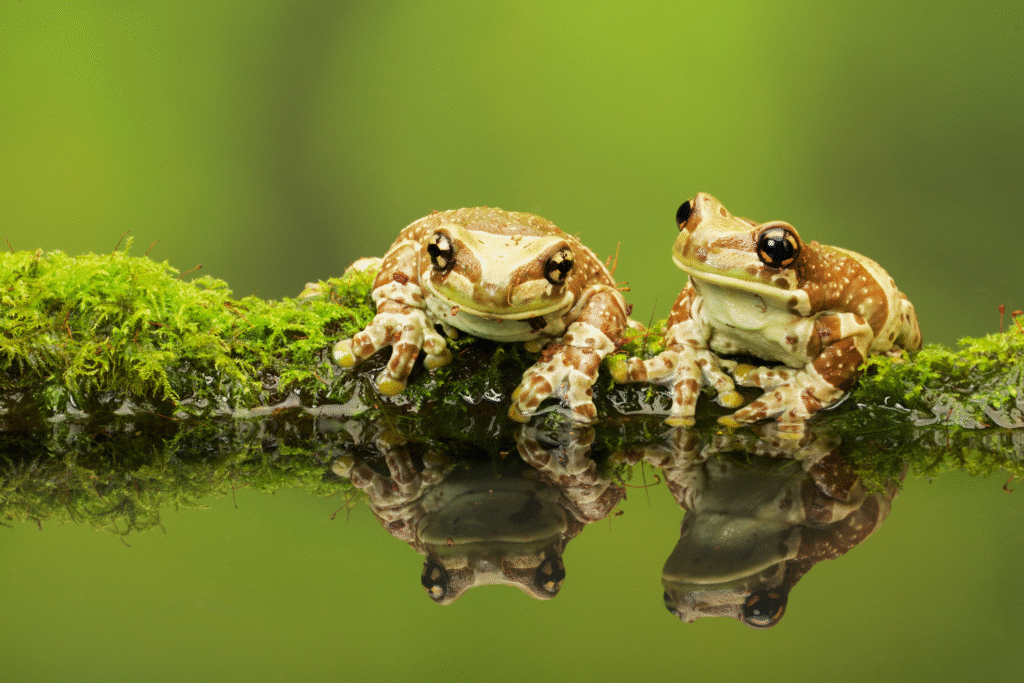
U.S. frog populations are collapsing at a staggering rate of 3.7 percent annually, according to comprehensive federal research that reveals how climate change is systematically destroying amphibian communities from coast to coast. These aren’t just numbers on a spreadsheet—they represent the disappearance of entire species from ponds, streams, and wetlands where they’ve thrived for millions of years, creating silent springs across American landscapes.
The decline affects every region and every type of habitat, from protected national parks to suburban neighborhoods, demonstrating that even our most pristine environments cannot shield these vulnerable creatures from the cascading effects of global warming, disease, and environmental destruction that are reshaping ecosystems faster than evolution can respond.
1. Federal scientists document the fastest amphibian collapse in recorded history.

Comprehensive research tracking amphibian populations across the United States reveals that these creatures are vanishing from their habitats at an unprecedented rate of 3.7 percent per year, a pace of decline that accumulates into devastating population losses within just a few decades. This rate far exceeds natural background extinction levels and represents one of the most rapid wildlife population collapses ever scientifically documented across an entire continent, affecting species from California red-legged frogs to Sierra Madre yellow-legged frogs in Southern California mountains.
According to the U.S. Geological Survey’s landmark study on amphibian decline trends, even though these percentages seem small on the surface, small numbers build up to dramatic declines over time, creating a biodiversity crisis that scientists describe as both surprising and of significant concern. The research measured “occupancy rates,” tracking how quickly amphibians disappeared from ponds, lakes, and other habitat features where they had previously been found, revealing a systematic pattern of ecosystem abandonment occurring across every American landscape from Oregon’s foothill yellow-legged frog habitats to Florida’s wetlands.
2. Climate change triggers deadly fungus outbreaks that devastate entire frog communities.

Rising global temperatures create perfect conditions for the spread of Batrachochytrium dendrobatidis, a lethal skin fungus that has devastated Costa Rica’s golden toads and Monteverde harlequin frogs while spreading northward to threaten North American species including Pacific chorus frogs in Yosemite National Park and Cascade frogs throughout the Pacific Northwest. The fungus attacks amphibians’ permeable skin, disrupting their ability to regulate water and electrolyte balance, ultimately leading to cardiac arrest and death in infected individuals.
Climate warming has shifted temperature ranges toward optimal conditions for fungal growth and reproduction, while increased cloud cover associated with changing weather patterns creates the cool days and warm nights that allow the pathogen to thrive and spread more effectively than ever before, as reported by NPR’s coverage of groundbreaking research linking climate change to amphibian extinctions. The combination of stressed amphibian immune systems and ideal fungal growing conditions has created a pandemic that has already contributed to the population decline of over 500 amphibian species globally, with frogs comprising 93 percent of these devastating losses from tropical harlequin frogs in Central America to temperate species throughout the United States.
3. Mississippi’s dusky gopher frog faces extinction with fewer than 100 adults remaining.

Climate change-induced droughts threaten the last surviving population of dusky gopher frogs in Harrison County, Mississippi, where fewer than 100 adults represent one of the rarest amphibians in North America, completely dependent on ephemeral ponds that must fill with winter rains to allow tadpole development before drying out completely. The timing and frequency of rainfall has become critical to the successful reproduction of these endangered frogs, as climate change disrupts the precise hydrological cycles that their breeding strategy has evolved to exploit over thousands of years.
According to research published by the University of Texas at Austin’s College of Natural Sciences and federal habitat designation documents, the dusky gopher frog exemplifies how multiple climate-related stressors work together to push already vulnerable species toward extinction, where drought forces remaining individuals into smaller water bodies while simultaneously reducing breeding success through shortened pond hydroperiods. The species’ historic range once stretched from southeastern Louisiana through southern Mississippi to southwestern Alabama, but habitat destruction combined with climate disruption has compressed their entire global population into just three ponds in southern Mississippi, making them extraordinarily vulnerable to any single catastrophic event or continued environmental degradation.
4. Warming temperatures disrupt breeding cycles from Alaska to the Southeast.

Earlier spring warming caused by climate change triggers premature breeding in frog populations across diverse climates, from wood frogs emerging too early from winter hibernation in New England’s forests to Southern leopard frogs in the Gulf Coast states beginning reproduction before their aquatic ecosystems can provide adequate food resources. This temporal mismatch between amphibian life cycles and environmental conditions creates widespread reproductive failure as embryos develop in suboptimal conditions that reduce hatching success and tadpole survival rates.
The disruption of breeding timing also affects predator-prey relationships and food web dynamics in aquatic ecosystems from the Pacific Northwest to the Atlantic seaboard, as amphibian reproductive cycles become misaligned with the seasonal availability of insects and other prey species that tadpoles and adult frogs depend on for survival. These phenological mismatches cascade through entire ecosystem networks, reducing reproductive success even for amphibians that survive the initial climate stresses, creating long-term population decline trajectories that persist across habitats from Oregon’s mountain meadows to Florida’s cypress swamps.
5. Western toads and Cascade frogs face deadly ultraviolet radiation as mountain waters recede.
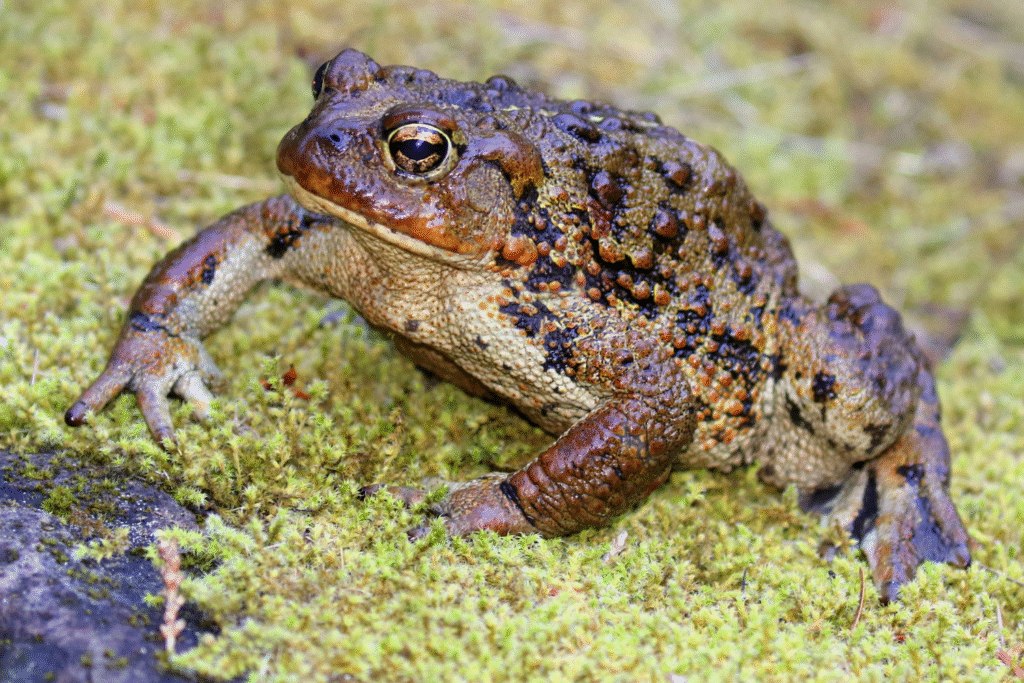
Climate change-driven droughts reduce water depth in high-elevation ponds and streams where Western toads and Cascade frogs breed throughout the Rocky Mountains and Cascade Range, exposing developing eggs and tadpoles to harmful ultraviolet-B radiation that causes embryonic mortality, developmental abnormalities, and immune system suppression. These UV radiation effects are particularly devastating for transparent amphibian eggs in shallow alpine pools where protective canopy cover is naturally limited.
Even Western toad and Cascade frog embryos that survive initial UV exposure often develop severe malformations including spinal curvature, missing limbs, and eye deformities that prevent normal feeding behavior and make individuals more vulnerable to predation after hatching. The combination of increased radiation exposure and compromised immune function creates a double assault on developing amphibians throughout mountain ecosystems from Colorado’s high country to Washington’s Olympic Peninsula, reducing population recruitment and ensuring that fewer individuals survive to reproductive maturity in each successive generation.
6. Agricultural chemicals devastate amphibians from California’s Central Valley to Midwest farmlands.
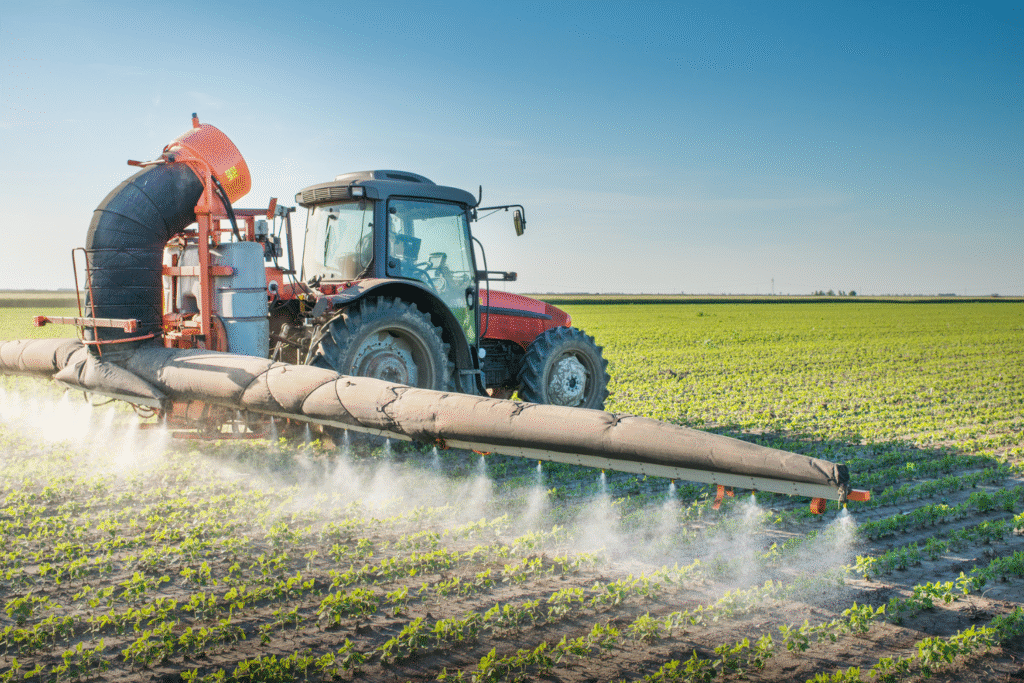
Pesticides and herbicides used in agricultural areas adjacent to amphibian habitats suppress immune function in frogs and salamanders from California’s Sacramento Valley to Iowa’s corn belt, making them more susceptible to fungal infections, parasitic diseases, and other pathogens that would normally be survivable for healthy individuals. The chemical atrazine, one of the most widely used herbicides in the United States, has been specifically linked to increased infection rates and reproductive abnormalities in American bullfrogs, green tree frogs, and leopard frogs across agricultural regions.
These agricultural contaminants also modify aquatic ecosystems in ways that favor disease transmission throughout farming regions from the Great Plains to the Southeast, increasing algae growth that supports larger populations of snails and other intermediate hosts for parasitic infections that cause limb deformities and mortality in native amphibian populations. The interaction between chemical pollution and climate stress creates synergistic effects in agricultural watersheds where neither factor alone would be lethal, but their combination overwhelms amphibian adaptive capacity and accelerates population decline beyond natural recovery rates for species ranging from chorus frogs in Texas rice fields to salamanders in North Carolina tobacco country.
7. American bullfrogs invade northward as warming temperatures eliminate natural barriers.
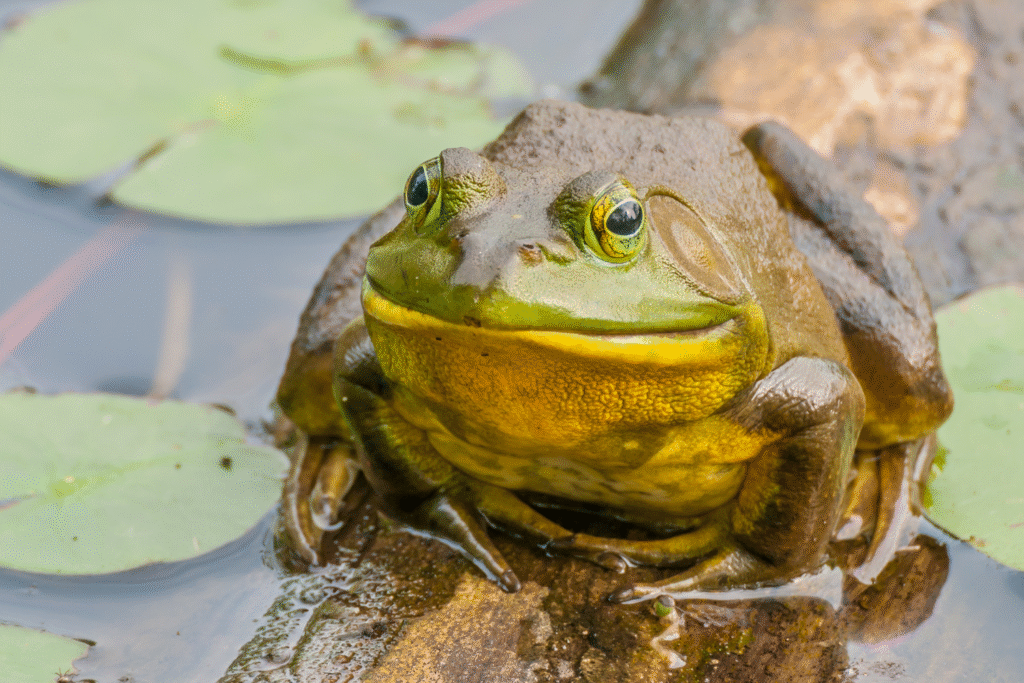
Climate change enables invasive American bullfrogs to expand from their native eastern range into previously unsuitable northern and high-elevation habitats throughout the Mountain West and Pacific Coast, where they outcompete native species like red-legged frogs and yellow-legged frogs for food resources and breeding sites while serving as reservoirs for diseases that devastate local amphibian communities. These aggressive invaders can survive in warmer water temperatures that are becoming more common as climate change alters aquatic ecosystems from Montana’s valleys to California’s foothills.
The expanding bullfrog invasion creates cascading ecological disruptions as these large predators consume native frog species, their tadpoles, and other aquatic wildlife while introducing pathogens that spread through previously isolated mountain and desert amphibian populations. Native species like the endangered Sierra Nevada yellow-legged frog find themselves unable to compete with bullfrogs that thrive in the altered thermal conditions of warming streams and ponds, leading to local extinctions across the western United States where climate change has opened new invasion corridors for these destructive non-native amphibians.
8. Three-lined salamanders and newts disappear from Eastern forests as habitats dry up.
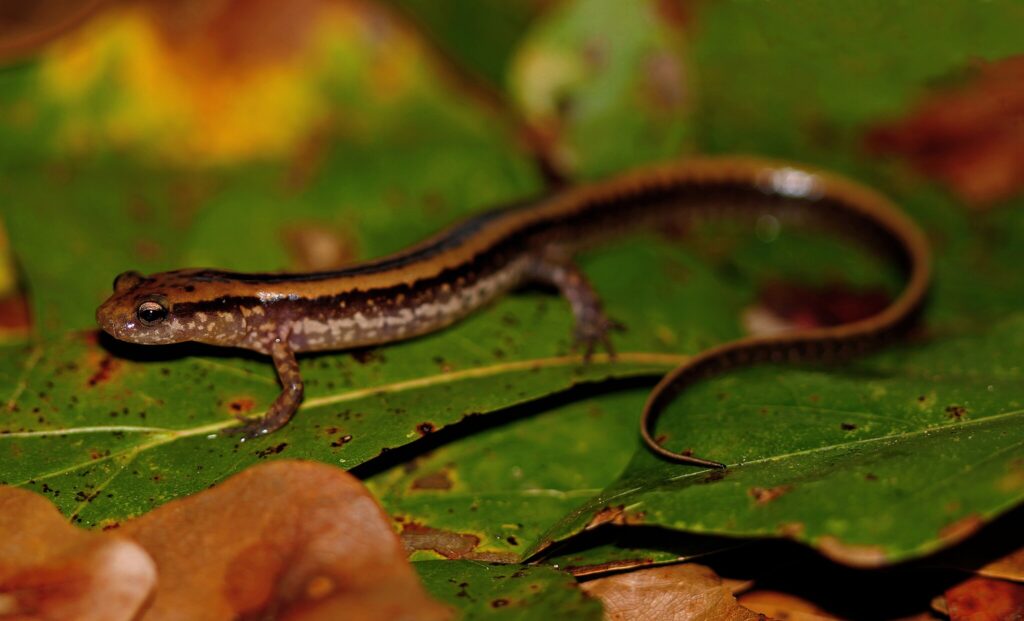
Climate change-driven shifts in precipitation patterns eliminate the moist microhabitats that Eastern salamanders and newts require for survival, forcing species like three-lined salamanders in Virginia’s Prince William Forest Park and red-backed salamanders throughout Appalachian forests to abandon territories their populations have occupied for thousands of years. These lungless amphibians depend entirely on skin respiration, making them extremely vulnerable to drought conditions that reduce humidity levels in forest floor environments.
The loss of salamander populations creates ecosystem-wide disruptions throughout Eastern deciduous forests, as these abundant predators normally consume vast quantities of forest floor invertebrates and serve as crucial prey for birds, snakes, and small mammals. From New England’s maple forests to Southern pine woods, the disappearance of salamander species represents a fundamental alteration of forest ecosystem dynamics that reduces nutrient cycling efficiency and eliminates keystone species whose ecological roles cannot be replaced by other forest animals.
9. Puerto Rico suffers complete amphibian community collapse as hurricanes intensify.
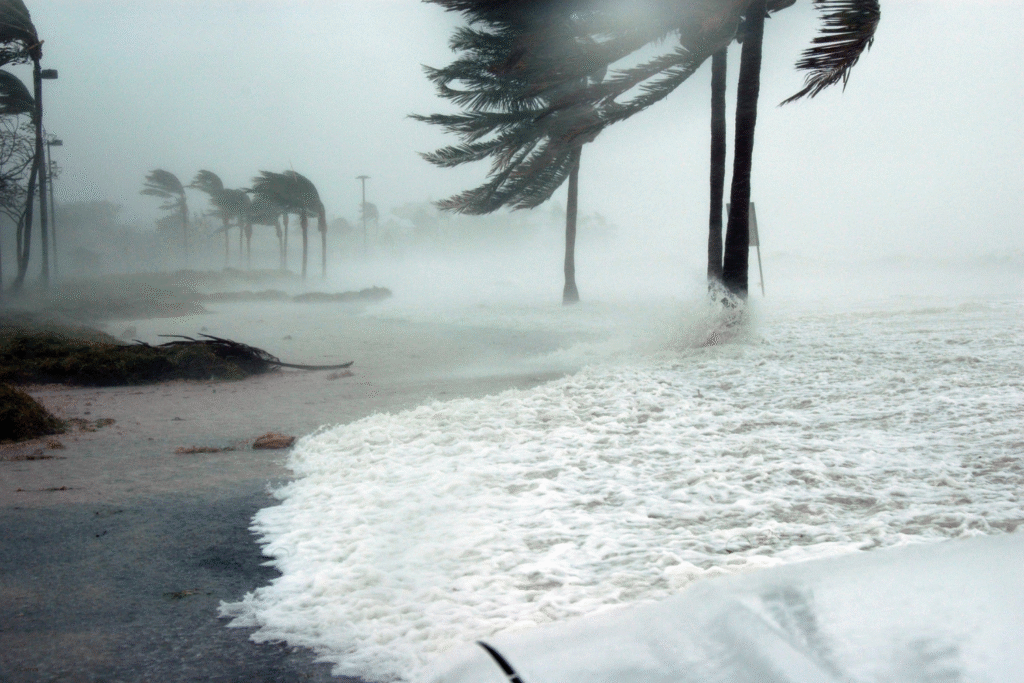
Climate change-intensified hurricanes devastate Puerto Rico’s endemic amphibian species, including the endangered golden coqui and other native tree frogs that cannot recover from increasingly frequent and severe storm events that destroy forest canopies and eliminate breeding sites. The island’s 17 endemic frog species face compound threats from habitat destruction, disease outbreaks, and climate disruption that have already driven several species to near-extinction levels within just a few decades.
Hurricane damage compounds existing climate stresses on Puerto Rican amphibians by fragmenting remaining forest habitats and creating opportunities for invasive species colonization in disturbed areas where native frogs once thrived. The loss of Puerto Rico’s unique amphibian fauna represents an irreversible biodiversity disaster where endemic species found nowhere else on Earth face extinction from climate impacts that exceed their evolutionary capacity for adaptation and recovery in rapidly changing tropical ecosystems.
10. Mountain yellow-legged frogs face extinction as California’s alpine lakes warm beyond survival limits.
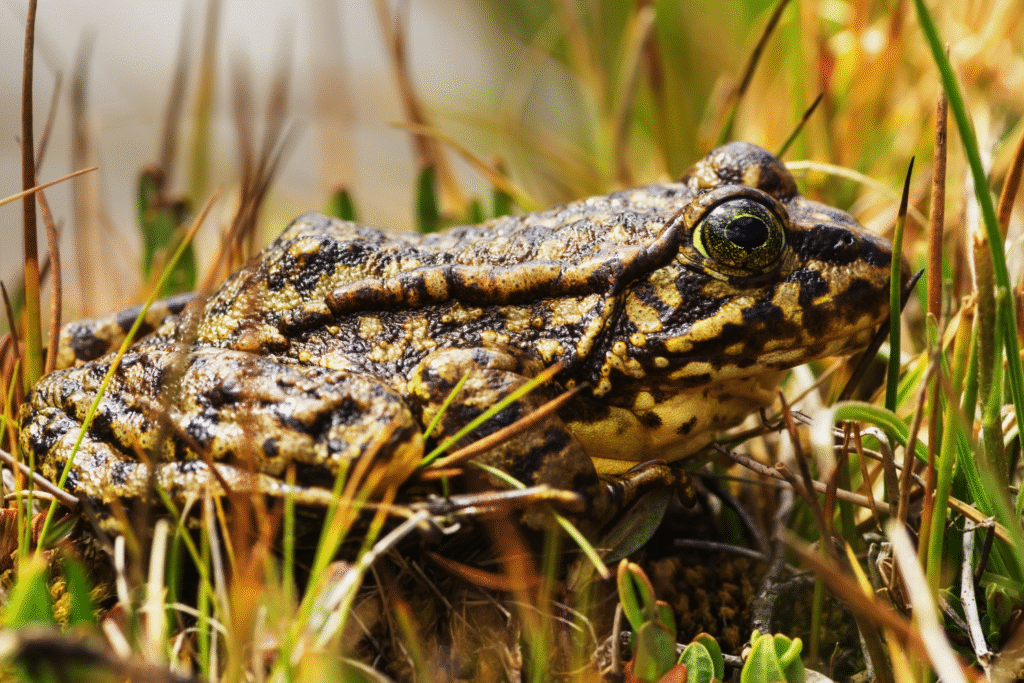
The Southern California mountain yellow-legged frog, already reduced to only 200 wild adults remaining in the mountains surrounding Los Angeles County, confronts the final threat of warming alpine lakes that exceed the thermal tolerance limits evolved over millions of years for these high-elevation specialists. These federally endangered amphibians require cold, well-oxygenated mountain waters that are disappearing as climate change transforms Sierra Nevada and San Gabriel Mountain ecosystems.
USGS biologists leading desperate reintroduction efforts for mountain yellow-legged frogs face the sobering reality that suitable habitat may disappear entirely within decades as warming temperatures and altered precipitation patterns eliminate the cold-water refugia these relict populations need for survival. The potential extinction of mountain yellow-legged frogs represents the loss of unique evolutionary lineages adapted to California’s most pristine wilderness areas, demonstrating how even protected national forest and park environments cannot shield specialized endemic species from the global impacts of climate change that transcend all political and geographic boundaries.
